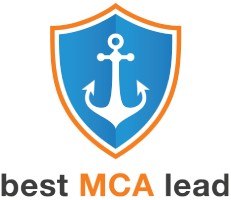outbound lead generation
Outbound sales have the benefit of giving sales teams and companies more control over their cold calling efforts. It is a measurable process, one that can be improved upon through the use of lead scoring.
However, because it involves direct outreach to potential customers who might not know about your product or service, using outbound techniques should be done in addition to other marketing strategies such as inbound efforts.
Sales leads are people who have shown interest in the company by requesting information via email or phone. They may even have already purchased a product or attended an event. The goal is to generate interest in a product or service and build a pipeline. The communication methods used for outbound lead generation include cold calling, direct email, social selling and direct mail.
It’s important to focus on the types of media that will reach your target audience and allow you to generate enough attention within a reasonable time frame. In some cases, there may be too much competition for outbound media. For example, if you want to sell landscaping services in Florida, it might not make sense to invest in a billboard because there are likely many other companies trying to do the same thing with their own billboards. Some companies choose direct email campaigns instead of more expensive marketing efforts such as cold calling or buying television ads.
However, while costs can sometimes feel prohibitive when using outbound lead generation techniques, they can also provide benefits at scale by allowing sales teams companies more control over their cold calling efforts. Outbound leads can be seen as a measurable process, one that can be improved upon through the use of lead scoring techniques.
In general, outbound leads are more expensive than inbound because they take more effort and you have to pay for them upfront. They also take longer to close than inbound leads because you’ve put in extra time and money building up trust with customers who may not even know about your company yet.
Marketing automation tools give sales reps an opportunity to connect with interested customers at just the right moment when they’re thinking about making their next purchase or when they’ve expressed interest in their needs via an event or webinar registration. The key is using these tools strategically so that sales teams aren’t overwhelmed by inbound leads and can use inbound and outbound techniques in tandem.
There are many different companies that specialize in lead generation, such as InsideSales.com or Act-On Software. While these services can be expensive up front, they may save time for your sales reps when they’re ready to make the initial outreach to potential customers because you won’t need a dedicated team to create marketing campaigns and place ads. You can instead rely on outsourced teams to generate leads for you while your own staff focuses on closing deals with existing clients and identifying new opportunities via inbound strategies.
They enable tracking of relevant data and help determine areas where your company is succeeding and where it needs improvement: whether that’s an increase in qualified leads or a decline in conversion rates. Of course, the best way to improve is with A/B testing and by adding new sales reps or modifying their sales processes as necessary. You can’t know if you’re making progress without tracking data and measuring performance.
Many companies use marketing automation tools: which allow them to connect with interested customers at just the right moment when they’re thinking about making their next purchase or when they’ve expressed interest in their needs via an event or webinar registration. The key is using these tools strategically so that sales teams aren’t overwhelmed by leads and can use inbound and outbound techniques in tandem. For example, a lead generation company might place advertisements on social media websites such as Facebook or Twitter for potential customers who have shown interest in a particular topic.
For example, if they’re interested in purchasing landscaping equipment online after reading an article about lawn maintenance they might see a relevant ad on Facebook for a company that offers their services. If a potential customer follows the link provided they would end up on a page with information about this particular business including how much their services cost and what types of equipment they use.
Inbound marketing focuses on getting your content out to as many people as possible so it’s not surprising that one of its objectives is generating high volume leads over time by collecting as much pertinent data as possible from visitors. This focus can be seen in practically every aspect of creating an effective inbound strategy: from using landing pages designed just for lead

